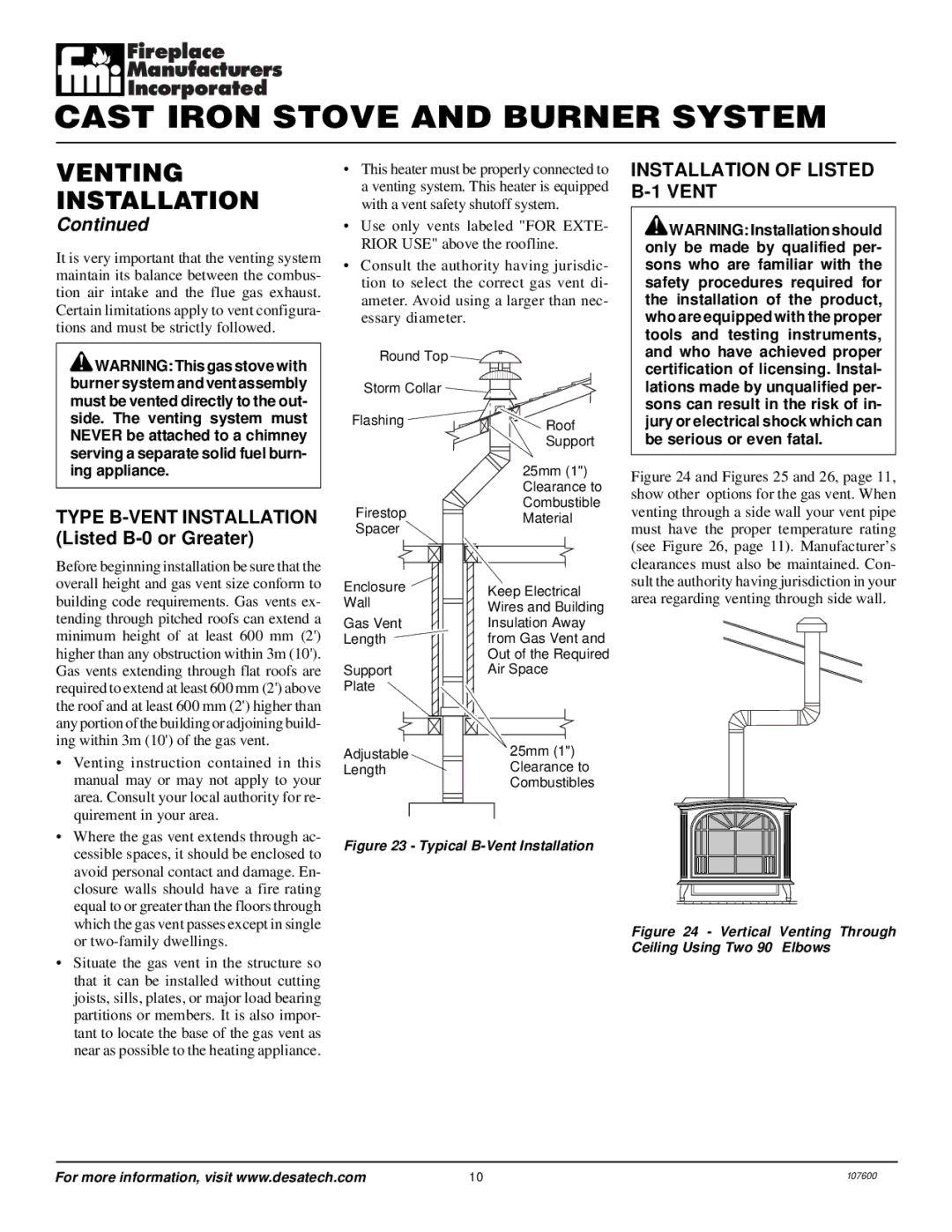
CAST IRON STOVE AND BURNER SYSTEM
VENTING INSTALLATION
Continued
It is very important that the venting system maintain its balance between the combus- tion air intake and the flue gas exhaust. Certain limitations apply to vent configura- tions and must be strictly followed.
•This heater must be properly connected to a venting system. This heater is equipped with a vent safety shutoff system.
•Use only vents labeled "FOR EXTE- RIOR USE" above the roofline.
•Consult the authority having jurisdic- tion to select the correct gas vent di- ameter. Avoid using a larger than nec- essary diameter.
INSTALLATION OF LISTED B-1 VENT
![]() WARNING: Installation should only be made by qualified per- sons who are familiar with the safety procedures required for the installation of the product, who are equipped with the proper tools and testing instruments,
WARNING: Installation should only be made by qualified per- sons who are familiar with the safety procedures required for the installation of the product, who are equipped with the proper tools and testing instruments,
![]() WARNING: This gas stove with burner system and vent assembly must be vented directly to the out- side. The venting system must NEVER be attached to a chimney serving a separate solid fuel burn- ing appliance.
WARNING: This gas stove with burner system and vent assembly must be vented directly to the out- side. The venting system must NEVER be attached to a chimney serving a separate solid fuel burn- ing appliance.
TYPE B-VENT INSTALLATION (Listed B-0 or Greater)
Before beginning installation be sure that the overall height and gas vent size conform to building code requirements. Gas vents ex- tending through pitched roofs can extend a minimum height of at least 600 mm (2') higher than any obstruction within 3m (10'). Gas vents extending through flat roofs are required to extend at least 600 mm (2') above the roof and at least 600 mm (2') higher than any portion of the building or adjoining build- ing within 3m (10') of the gas vent.
• Venting instruction contained in this |
manual may or may not apply to your |
area. Consult your local authority for re- |
quirement in your area. |
Round Top
Storm Collar
Flashing
Firestop
Spacer
Enclosure ![]()
Wall
Gas Vent Length ![]()
Support
Plate
Adjustable
Length
Roof
Support
25mm (1") Clearance to Combustible Material
Keep Electrical Wires and Building Insulation Away from Gas Vent and Out of the Required Air Space
25mm (1") Clearance to Combustibles
and who have achieved proper certification of licensing. Instal- lations made by unqualified per- sons can result in the risk of in- jury or electrical shock which can be serious or even fatal.
Figure 24 and Figures 25 and 26, page 11, show other options for the gas vent. When venting through a side wall your vent pipe must have the proper temperature rating (see Figure 26, page 11). Manufacturer’s clearances must also be maintained. Con- sult the authority having jurisdiction in your area regarding venting through side wall.
• Where the gas vent extends through ac- |
cessible spaces, it should be enclosed to |
avoid personal contact and damage. En- |
closure walls should have a fire rating |
equal to or greater than the floors through |
which the gas vent passes except in single |
or |
• Situate the gas vent in the structure so |
that it can be installed without cutting |
joists, sills, plates, or major load bearing |
partitions or members. It is also impor- |
tant to locate the base of the gas vent as |
near as possible to the heating appliance. |
Figure 23 - Typical B-Vent Installation
Figure 24 - Vertical Venting Through
Ceiling Using Two 90° Elbows
For more information, visit www.desatech.com | 10 | 107600 |
